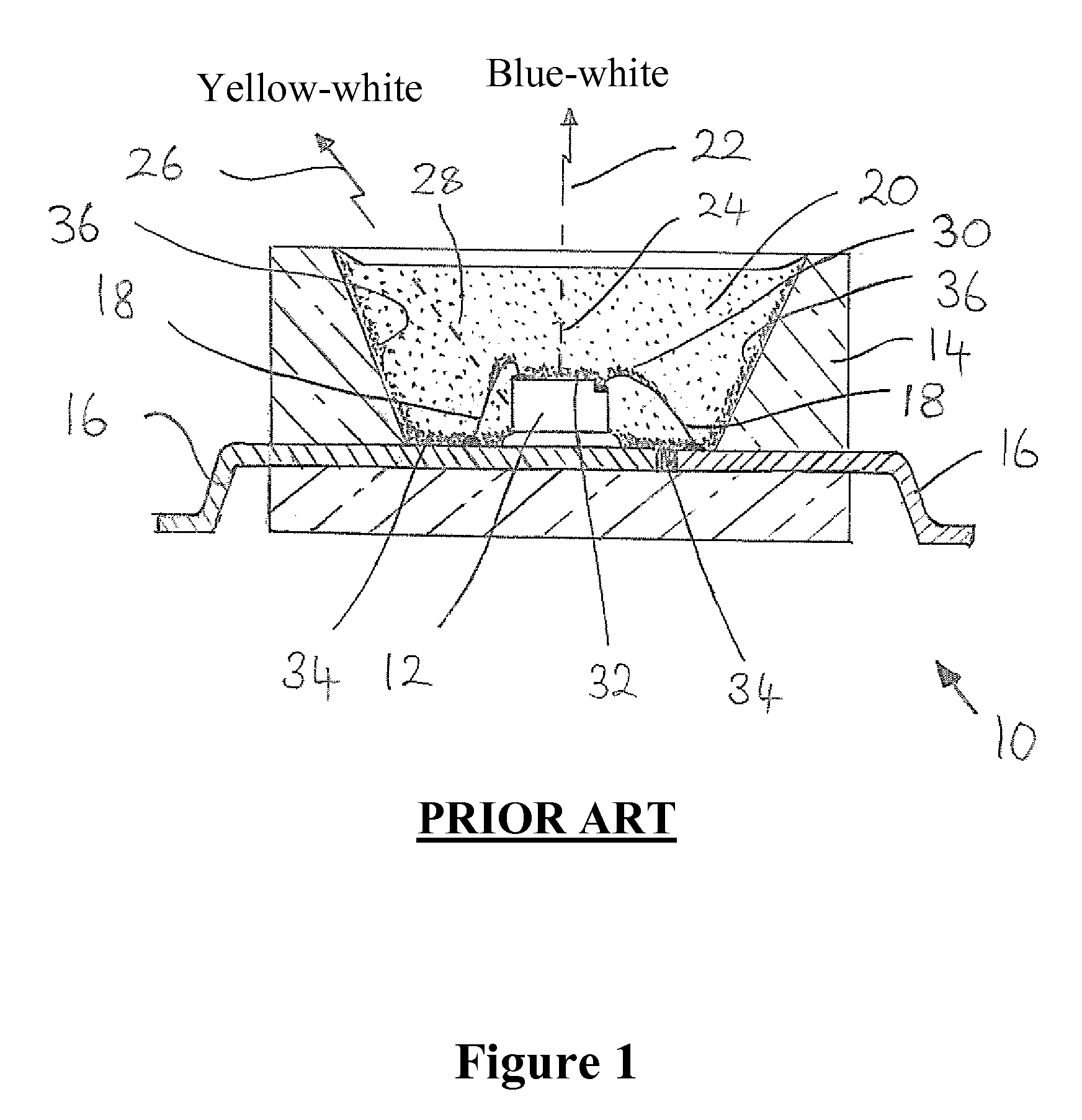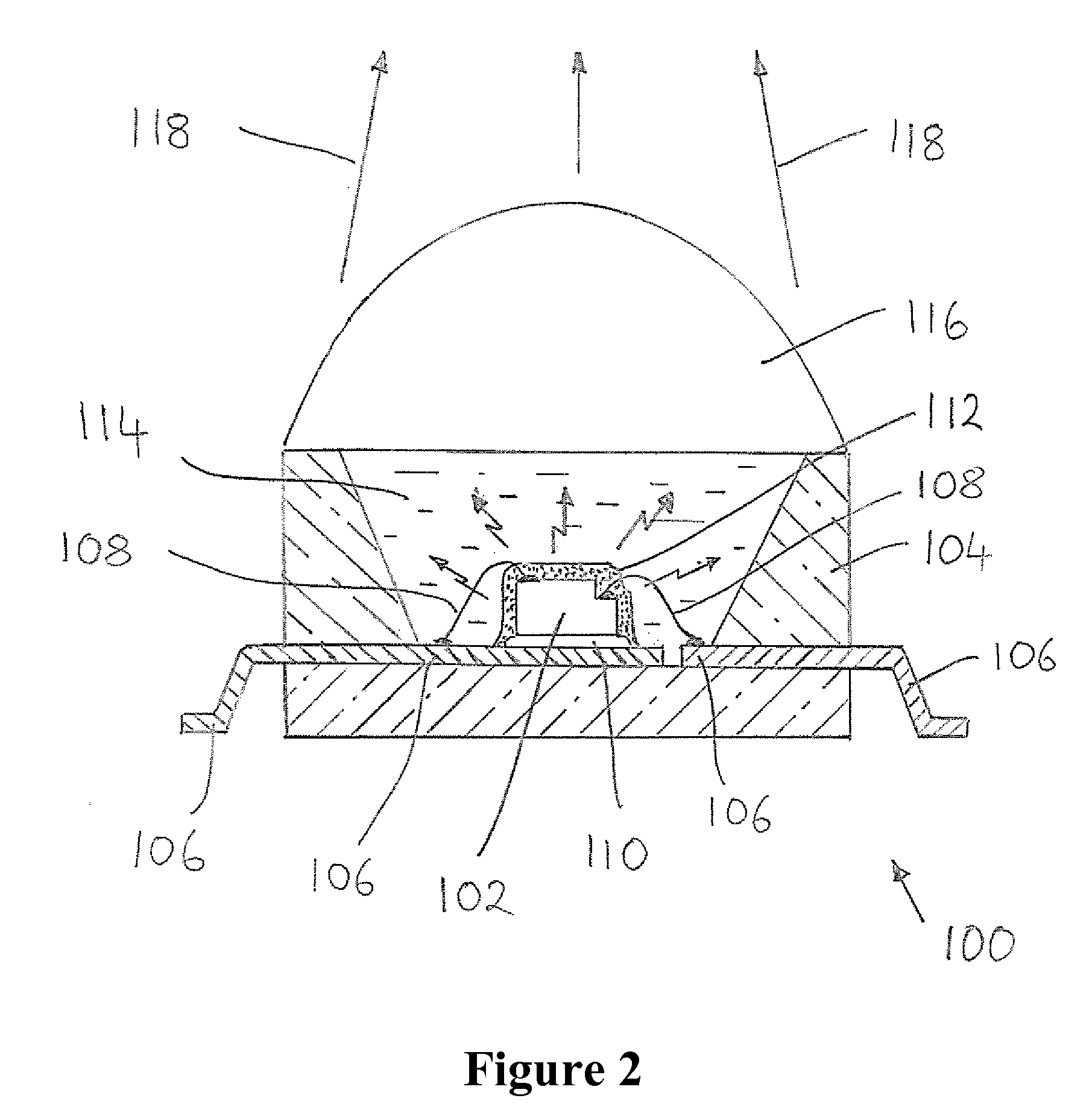Light emitting device with phosphor wavelength conversion and methods of producing the same
a technology of light-emitting devices and phosphor wavelengths, which is applied in the direction of solid-state devices, optical articles, other domestic articles, etc., can solve the problems of color/cct variation that can become a significant problem, color/cct uniformity degradation, etc., and achieve the effect of improving the uniformity of color light outpu
- Summary
- Abstract
- Description
- Claims
- Application Information
AI Technical Summary
Benefits of technology
Problems solved by technology
Method used
Image
Examples
Embodiment Construction
1. Description of Preferred Embodiments
[0038]Throughout this specification the same reference numerals are used to denote like parts.
[0039]FIG. 2 is a schematic representation of a light emitting device 100 with phosphor wavelength conversion in accordance with an embodiment of the invention. The device 100 is intended to generate white light and comprises an LED chip 102 which is mounted within a package (housing) 104. As illustrated the package can comprise a low temperature co-fired ceramic (LTCC) package which has a recess for receiving one or more LED chips 102. The walls of the recess are inclined to reflect light in a direction out of the recess. In other arrangements the package 104 can comprise an array of recesses each of which is configured to receive one or more LED chips. Alternatively, the package can comprise a metallic cup, a high temperature polymer package or other package as known in the art. A metallic cup can aid in thermal management of the chip 102.
[0040]The L...
PUM
| Property | Measurement | Unit |
|---|---|---|
| thickness | aaaaa | aaaaa |
| thickness | aaaaa | aaaaa |
| temperature | aaaaa | aaaaa |
Abstract
Description
Claims
Application Information
 Login to View More
Login to View More - R&D
- Intellectual Property
- Life Sciences
- Materials
- Tech Scout
- Unparalleled Data Quality
- Higher Quality Content
- 60% Fewer Hallucinations
Browse by: Latest US Patents, China's latest patents, Technical Efficacy Thesaurus, Application Domain, Technology Topic, Popular Technical Reports.
© 2025 PatSnap. All rights reserved.Legal|Privacy policy|Modern Slavery Act Transparency Statement|Sitemap|About US| Contact US: help@patsnap.com



